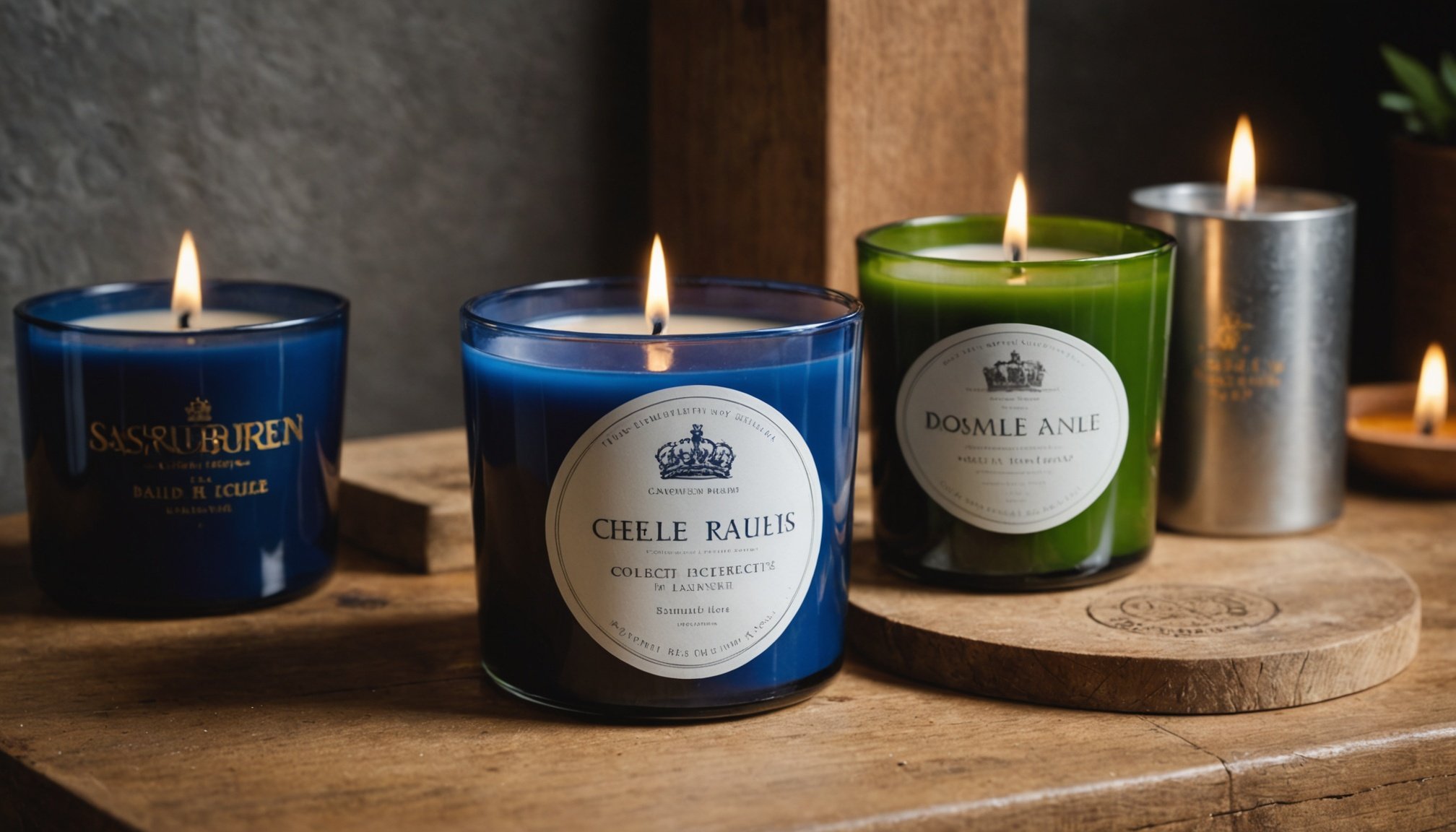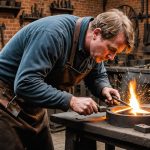Historical Context of Candle Craftsmanship in Britain
The evolution of candle-making in Britain dates back to ancient times when candles were a necessity for illumination. Initially, materials such as animal fat were used in the production of candles. Over time, advancements led to the use of beeswax and, eventually, paraffin. These developments marked significant shifts in the industry, resulting in improved efficiency and quality of light.
Key historical influences on candle craftsmanship in Britain can be traced to the Roman occupation, which introduced more refined techniques and materials. The use of tallow from animals such as sheep became prevalent during medieval times, making candles more accessible. As trade routes expanded, the introduction of new materials, like spermaceti from whales, further enhanced candle quality.
Also read : Explore Plymouth’s Rich Naval Battle History with Exceptional Guided Tours
In British culture, candles have played an integral role in various celebrations and rituals. For centuries, they have been a symbol of warmth and tradition, particularly during festive occasions such as Christmas and Bonfire Night. The practice of lighting candles during religious ceremonies and social gatherings continues to underscore their cultural significance. These traditions have not only preserved historical candle-making techniques but also highlight the enduring cultural importance of candles in Britain.
Techniques of Traditional Candle Making
In the realm of traditional candle making, the methods involved are as much a part of artisan craftsmanship as they are practical necessities. Central to the craft, wax selection plays a critical role. Different types of waxes, such as beeswax, paraffin, and soy, each possess unique properties. Beeswax, for example, offers a natural, subtle honey scent and is renowned for its clean burn, making it a premium choice among artisans.
Also to read : Discover Captivating English Destinations for Immersive Guided Tours into British Maritime Navigation Heritage
Methods of Wax Selection
Choosing the right wax requires understanding its melting point, scent retention, and burn time. Artisans adeptly utilise these aspects to create distinct candle characteristics. They might prefer a high melting point wax for pillar candles to prevent dripping, or soy wax for container candles due to its even burn. These choices shape the final product’s performance and aesthetics.
Wick Preparation and Types
Wick preparation is paramount for achieving optimal burning. Cotton, wood, and hemp are common wick materials, each impacting the candle’s flame and longevity differently. Cotton wicks are often used for their reliability, while wood wicks provide a crackling effect, mimicking a fireplace. Preparing wicks involves soaking and treating to ensure proper fuel delivery, crucial for consistent flame maintenance.
Molding and Shaping Techniques
Artisanal approaches to molding and shaping add a creative element to candle making. From traditional dipping methods to modern molds, the process allows for diverse shapes and designs. Craftspeople often experiment with techniques to produce intricate patterns or simplistic elegance, enhancing the visual appeal of their creations. These methods showcase the maker’s skill and play a significant role in defining traditional British candle craftsmanship.
Profiles of Notable British Candle Artisans
Delving into the world of candle artisans unveils a rich tapestry of creativity and tradition. These individuals bring a unique flavour to British candle craftsmanship with their distinct styles and techniques. Each artisan’s journey reflects a commitment to preserving historical methods while embracing innovation.
For instance, renowned artisan Jo Malone is celebrated for her minimalist designs and use of luxurious ingredients. Her signature style often includes natural scents and refined simplicity, embodying the essence of British elegance. This approach not only attracts candle enthusiasts but also inspires budding artisans.
Fiona Cairns, another esteemed figure, infuses her candles with vibrant colours and intricate patterns. Her work is characterised by an intricate balance of aesthetic allure and functional artistry. Whether using traditional wax materials or exploring soy alternatives, her creations resonate deeply with contemporary tastes and classic sensibilities.
These artisans, along with others, contribute invaluable insights into the craft. Their dedication to maintaining quality and artistry supports a thriving community around the intricacies of traditional candle making. Through workshops, exhibitions, and personal anecdotes, they share their journeys, inspiring the next generation to carry forward this esteemed craftsman’s legacy.
Regional Variations in Candle Craft
Exploring the regional candle craftsmanship across Britain unveils a mosaic of diverse styles that reflect local traditions and materials. Each area, such as England, Scotland, and Wales, offers distinctive approaches and influences on candle-making, shaped by their unique histories and resources.
Distinct Styles Across England, Scotland, and Wales
In England, candle-making often emphasises elegance and refinement, with many artisans crafting traditional designs using beeswax and paraffin. In contrast, Scottish artisans may focus on natural aesthetics, incorporating local botanicals and scents that speak to the rugged landscapes. Welsh candle-makers pride themselves on vibrant colours and intricate patterns that express regional cultural themes.
Influence of Local Ingredients and Materials
The choice of materials significantly impacts the aesthetics and functionality of regional candles. For instance, Scotland’s abundant natural resources foster a prevalence of candles with earthy aromas, while Welsh artisans might opt for vivid dyes. The availability of local wax sources also dictates the popularity of certain types of candles.
Historical Regions of Candle Craft
The historical development of candle craft in these areas highlights how geography and tradition influence designs. Regions with strong maritime history, for example, adapted to wax materials readily available from trade routes, leading to distinctive regional styles that continue to inspire artisans today.
Cultural Significance and Usage of Candles
Candles hold a profound cultural importance in British society, extending beyond mere illumination. They are deeply intertwined with various ceremonies and rituals, symbolising hope, remembrance, and celebration. During weddings, candles often serve as symbols of unity and love, while in memorials, they represent the enduring connection with loved ones.
In holiday traditions like Christmas and Bonfire Night, candles illuminate festivities, enhancing the atmosphere with warmth and charm. The Advent candle, for instance, is a staple in many homes, marking the countdown to Christmas day with each weekly lighting. Such rituals underscore not only tradition but also the intrinsic beauty of candlelight.
Candles also feature prominently in religious ceremonies. In churches across the UK, they are used to create settings of solemnity and reverence. Beyond religious use, the resurgence of interest in traditional candles has sparked a market revival. This demand fuels a niche industry dedicated to handmade, artisanal products that blend old-world techniques with modern aesthetics.
In recent years, society’s shift towards mindfulness and simplicity has further illuminated candles as tools for relaxation and introspection, creating spaces of tranquility and focus.
Sourcing and Learning the Craft
Embarking on a journey into candle crafting offers both creative fulfillment and a connection to time-honoured traditions. Exploring the landscape of artisanal candle shops can reveal hidden gems showcasing exceptional expertise and quality. Many of these shops are tucked away in quaint British towns or bustling city markets, offering handcrafted candles with unique scents and artistic designs.
Finding Artisanal Candle Shops
When searching for the perfect artisan candles, consider destinations known for their rich crafting heritage. Places like the Cotswolds and Edinburgh boast charming shops where traditional British candle making thrives, with local artisans often willing to share their knowledge.
Candle-Making Workshops and Classes
For those eager to delve deeper, participating in candle-making workshops provides a hands-on opportunity to learn the intricate candle-making techniques. These classes, frequently held in cities like London and Manchester, cater to various skill levels. Experienced instructors guide attendees through the process of wax selection, wick preparation, and molding, ensuring you depart with both knowledge and your own handcrafted piece.
Resources for DIY Candle Makers
Aspiring candle makers can find numerous resources online and in local craft stores, offering everything from waxes to molds. Comprehensive guides enable beginners to explore at their own pace, fostering an appreciation for this timeless craft.










